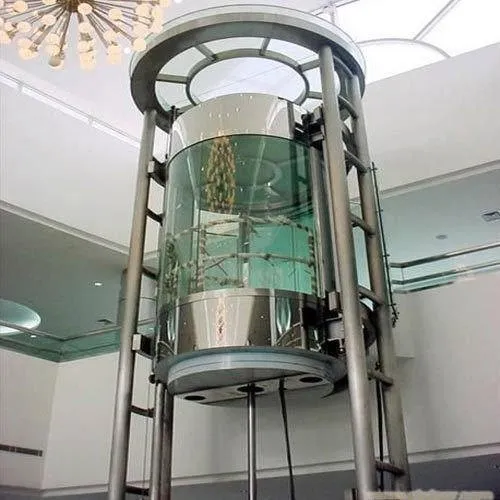Hydraulic Elevators
Hydraulic elevators operate using a fluid-driven piston system, ensuring smooth and efficient vertical movement. They are widely used in residential, commercial, and industrial buildings due to their durability and ability to carry heavy loads. Their simple design, reliable performance, and safety features make them ideal for low to mid-rise structures.
Product Description
Hydraulic Elevators
Hydraulic systems are a popular choice for buildings requiring reliable and efficient vertical transportation. These systems operate using a pump, fluid, and piston, allowing smooth movement between floors. They are commonly used in residential buildings, commercial establishments, hospitals, and industrial spaces due to their durability and ease of installation. Hydraulic lifts handle heavy loads and provide a comfortable ride, making them ideal for low to mid-rise buildings.
How These Elevators Work
Hydraulic systems function by using a pump that pushes fluid into a cylinder, forcing a piston to move upward. This motion lifts the elevator car smoothly. When descending, the fluid is released back into the reservoir, allowing the car to lower gradually. The entire system relies on hydraulic pressure instead of counterweights or cables, making it simpler compared to other elevator types. The smooth operation ensures passenger comfort and safety.
Types of Hydraulic Elevators
Various designs cater to different needs. Conventional hydraulic systems use a piston buried in the ground, extending and retracting as the lift moves. This type is suitable for buildings with adequate space for an underground cylinder. For sites with limited space, “hopeless” hydraulic systems utilize a telescoping piston mounted above ground. Roped hydraulic elevators combine hydraulic power with ropes and sheaves, allowing them to reach greater heights than traditional setups.
Advantages of Hydraulic Elevators
These systems offer multiple advantages. They are cost-effective to install and maintain compared to alternatives. The absence of counterweights reduces installation costs and space requirements. Additionally, they provide a smooth, quiet ride, ensuring passenger comfort. Their load-bearing capacity makes them suitable for commercial and industrial uses. With durability and long lifespan, these elevators are a reliable investment.
Installation and Maintenance
The installation process requires professional expertise. The setup involves hydraulic components, ensuring all safety measures are in place. Since these systems rely on fluid movement, regular maintenance is critical to prevent leaks and maintain performance. Routine inspections are key to keeping the system running smoothly and ensuring safety.
Safety Features
Hydraulic systems include emergency brakes, pressure relief valves, and backup power mechanisms for passenger safety. In case of power loss, these elevators can gradually descend to the nearest floor, ensuring safe exit. Modern systems feature automatic leveling, preventing trip hazards with precise floor alignment.













Reviews
There are no reviews yet.